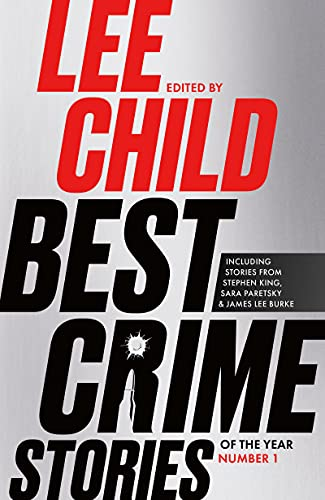Martin Edwards's Blog, page 68
October 18, 2021
Music of the Night - a new CWA anthology
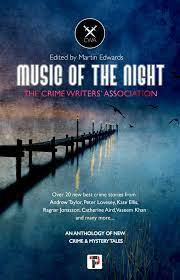
During the past year I've worked on a wide range of projects. Among them is Music of the Night, a new anthology published by Flame Tree Press under the aegis of the Crime Writers' Association. This follows Vintage Crime, a collection of stories culled from previous CWA anthologies and again published by Flame Tree. They produce very attractive books and I find them a pleasure to work with - they are enthusiastic and (not quite such a common trait among publishers!) very quick to respond.
I've been toying with the idea of a music-related anthology of mystery stories for quite a long time. Music means so much to us that it inspires some wonderful fiction. When I was invited to edit another CWA collection, it seemed like the perfect theme. And CWA members responded with their customary energy and enthusiasm. I was inundated with submissions, and making final choices was far from easy. The toughest part of editing an anthology is to reject stories. It comes with the job, of course, but I hate disappointing people. It's never enjoyable to receive a rejection. But I console myself with the reflection that many if not all of the stories that didn't make the cut will surely surface elsewhere in due course.
We have a nice mix of contributors. So there are four CWA Diamond Dagger winners, including Catherine Aird, Peter Lovesey, and Andrew Taylor, as well as high profile younger authors such as Ragnar Jonasson and Vaseem Khan and writers from overseas such as Art Taylor. And then there are various authors whose names are not yet as well-known. I'm extremely pleased that no fewer than nine of the 26 stories in the book have been written by CWA members whose work has never before featured in a CWA anthology. And yes, I found room for one of my own efforts. Somehow I resisted the temptation to take inspiration from the work of Burt Bacharach (in the past I've produced such stories as 'A House is Not a Home' and 'Twenty Four Hours from Tulsa') and instead wrote a story which relates to Joni Mitchell. It's called 'The Crazy Cries of Love'.
This year sees the 25th anniversary of publication of the first CWA anthology that I edited, Perfectly Criminal. A long time in the hot seat! Suffice to say that I've really enjoyed introducing a very wide range of talented authors to new readers and that I'm optimistic that this latest collection will entertain at least as much as its predecessors.
October 15, 2021
Forgotten Book - Poison in the Garden Suburb
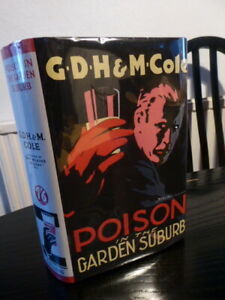
The detective novels of the husband and wife team GDH and Margaret Cole are rather a mixed bag. I have to say that I've been disappointed with quite a number of those I've read. It's always possible, however, that one may drop unlucky with a particular book, or even a number of them, so I thought I'd give the Coles another try. Their early (1929) detective novel Poison in the Garden Suburb received praise from Barzun and Taylor, so it seemed like a good option.
The story gets off to a lively, and occasionally witty, start. People gather at the Literary Institute of Medstead Garden Suburb to listen to a talk by a noted lecturer, but proceedings are interrupted by the collapse and sudden death of a nondescript bourgeois banker called Cayley, whose only claim to fame is that his young wife is extraordinarily beautiful (and not very bright: the authors clearly don't approve of her). The dead man has been poisoned with strychnine and the prime suspect is a young doctor called Shorthouse, whose behaviour is idiotic to put it mildly.
As a result of this drama, we're not told much about the talk itself, but its subject was eugenics. The Coles were leading lights in the Fabian Society (its fictional equivalent features in the novel as the Bureau for Left-Wing Information), which had a considerable enthusiasm for eugenics at one time. I wondered if Rachel Redford, one of the main characters and employed by the Bureau, was to some extent a fictional portrait of Margaret Cole herself. There are some nice bits of social comment in the early part of the book before we get rather bogged down in the murder investigation.
One of the official detectives, a gloomy superintendent, is pleasingly presented, but the key investigator is the Coles' series sleuth Henry Wilson, who at this stage of his career was operating as a private detective prior to returning to duty at Scotland Yard. I felt the story sagged in the middle, and the climactic excitement felt rather underwhelming, especially since I thought the identity of the murderer was fairly obvious from early on in the story (even though the culprit's true character was barely hinted at: I don't think this is a stellar example of fair play, at least in psychological terms). Overall, this is a novel with some very good ingredients made into a passably entertaining story. Nick Fuller reviewed the book a while ago and makes a number of good point as well as including fascinating contemporary reviews.
October 13, 2021
Agatha Christie's England - mapped by Caroline Crampton
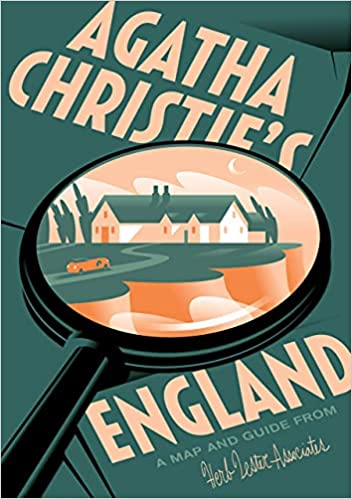
Rising interest in podcasts has been noticeable for some time now and the crime fiction enthusiast is very well served by those which are available. Over the past year or so, I've enjoyed taking part in discussions with quite a number of them. Some are relatively specialist, such as Jim Noy's The Invisible Event podcast, some more general, such as the Slightly Foxed podcast (which led me to discover the excellent literary quarterly journal, Slightly Foxed, which is full of good things). Another which I rate very highly is Shedunnit, which is written, hosted, and produced by Caroline Crampton.
Caroline has now diversified with a fun project - a map of Agatha Christie's England. This is published by Herb Lester Associates, and it turns out that they are responsible for a number of comparable maps connected with the world of crime and espionage. Regular readers of this blog will know that I have a weakness for maps in detective fiction and I've enjoyed poring over this one.
In a recent blog post, Kate Jackson discussed the map and also interviewed Caroline. I imagine that one of the trickiest aspects of the project was that Christie was born and always lived in the south of England, and inevitably the settings for her stories are skewed towards places she knew, especially in Devon and London. But Caroline has done a good job of including locations from the north, not only the obvious ones such as Abney Hall and Harrogate, but also those which don't immediately spring to mind as Christie-related, such as Edale in Derbyshire and the Pier Head in Liverpool.
The map comes with a couple of pretty postcards in the art deco style that is often associated with Christie, mainly as a result of TV productions, and all in all, I'd say that it makes a nice gift for the Christie fan in your life.
October 11, 2021
Alibis in the Archive 2021

This past weekend saw the first online version of Alibis in the Archive and what fun it was. Gladstone's Library was closed for eighteen months and only reopened at the start of September, but huge credit goes to the tireless Louisa Yates and Rhian Waller for managing the weekend so brilliantly. When I put the programme together, I was aiming for a combination of quality and variety and I'm enormously grateful to all the wonderful authors who took part.
Lynne Truss and Simon Brett got things off to a great start on Saturday morning with a very witty discussion which included Simon's memorable description of story structure as 'the Lego bit of the writing'. After that, David Brawn of HarperCollins interviewed me about Howdunit and other facets of my crime writing career; we also touched on The Life of Crime, the copy edit of which I'm currently working on.
Then came a wonderful contribution from two American writers whom I've long admired: Joseph Goodrich and Rupert Holmes. It was full of great moments and I particularly liked his story about his contribution to the soundtrack of Arthur (yes, Burt Bacharach wrote the soundtrack, but Rupert did play a part...) On Sunday morning, an American writer currently resident in London, Bonnie MacBird, talked to David Brawn about the enduring appeal of Sherlock Holmes.
Len Tyler led a discussion with Ruth Dudley Edwards, Michael Jecks and Antonia Hodgson about the timeless appeal of detective fiction. I was amused by Len's explanation of the appeal of Gladys Mitchell despite the fact that her books often fade after a bright start: 'she's worth reading for the first 50% of the book'. The weekend was rounded off with no fewer than four panellists joining us from the US to talk about American traditional detective fiction: Art Taylor, Shawn Reilly Simmons, Tonia Spratt-Williams, and Verena Rose. I loved every moment of the panels and feedback from the audience was just what we'd hoped for. Next year, Alibis will return as a live event over the weekend of 10-11 June, but with an online component as well. Can't wait...
October 8, 2021
Forgotten Book - Post after Post-Mortem
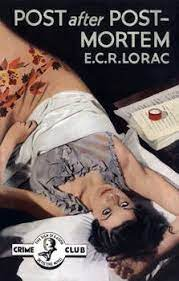
I'm working my way slowly through the books of E.C.R. Lorac (and those published under the name Carol Carnac) and continuing to enjoy her work. I don't claim that she's a match for Christie, Sayers, Berkeley, or Wade, but to me she is a sound detective author of the second rank. I also keep musing about the precise reasons for her resurgence in popularity following the appearance of several of her novels as British Library Crime Classics (the most recent being These Names Make Clues - a really good one!)
Often she focuses on setting, but she doesn't neglect character. As a generalisation, she takes more interest in her people than, say, John Rhode or Freeman Wills Crofts, but she is also adept at the mechanics of mystification. Post after Post-Mortem illustrates these virtues. The book was first published in the Collins Crime Club in 1936, but copies are very elusive and I've certainly never seen one in a dust jacket. Definitely a forgotten book, then, but one well worth a look.
The main setting this time is Oxfordshire - Stow and Moreton receive several mentions. In the first chapter, set in Upwood, a country house in that part of the world, we are introduced to the Surray family, whose lives appear to be idyllic. Young Naomi has just earned herself a First in Greats, while other members of the family include Ruth, an attractive but enigmatic figure who has established a successful career as a literary novelist. And literary matters play an interesting part in the storyline.
But then Ruth is found dead. At first, all the indications are that she has taken her own life as a result of a bout of depression. But then a misdirected letter that she sent to her brother Richard immediately prior to her demise comes belatedly to light and casts serious doubt on the inquest verdict. Richard consults Inspector MacDonald and the Scotland Yard man sets about unravelling a complex puzzle. This is one of the best Loracs I've read.
October 6, 2021
CADS 86
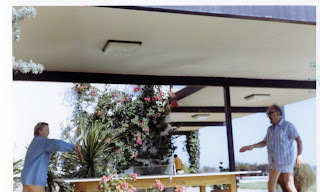
The arrival of certain publications through the post is always a cause for pleasure. A new novel by Peter Lovesey or Ann Cleeves are obvious examples; a new issue of Geoff Bradley's very long-running fanzine CADS is another. The latest CADS, number 86, has just come out. As usual, part of the joy of reading it is that Geoff offers such a varied mix of material. As you turn each page, you never quite know what you're going to find. But you can count on it being something interesting.
I did know in advance that there would be a piece of mine, a discussion about a Julian Symons novel, The Plot against Roger Rider. I discovered from the son and daughter-in-law of the dedicatees of the book that Symons based the key events in the story at a fictional version of a particular villa in Spain where they'd all holidayed together. By weird coincidence, my wife and her brothers also stayed in the same villa. And since writing the article I've discovered that the real life villa was called ‘Villa Rio Seco, Las Playetas, Benicàssim, Castellón, near Valencia’. The photo, kindly supplied by Alan Eden-Green, shows Julian playing table tennis at the villa. In his younger days he was a highly talented table tennis player and he published at least one article about the game.
One of the things I didn't expect to find was a review of my fourth novel, Yesterday's Papers, by Lyn McConchie, a New Zealander who discovered a copy in a charity shop. It's a book I'm very fond of, so I was pleased to see it described as 'a clever, twisting, excellently-written tale...The author did a fine job of depicting the sixties...there were no false notes.' To see a review in print like that, more than a quarter of a century after the book was written, is truly gratifying. This year sees the 30th anniversary of the arrival on the scene of Harry Devlin, and I'm delighted to announce that the first seven books are being relaunched: I'll talk more about this another day.
There are plenty of delights in the rest of the new issue of CADS, with contributions from Philip Gooden (on the under-estimated Nigel Balchin), Jamie Sturgeon, Philip Scowcroft, Arthur Vidro, Kate Jackson, Brad Friedman, Liz Gilbey, Marvin Lachman, Michael Wilson, Barry Pike, and many more. I've recommended CADS to many crime fans over the years and I don't think anyone interested in the quirky by-ways of the genre will ever be disappointed in it. You won't find copies in the shops, but Geoff can be contacted at geoffcads@aol.com
October 4, 2021
What's in a Name? Guest post by Margaret Murphy
I've long been intrigued by authors' use of pseudonyms. Today I'm delighted to host a guest post by Margaret Murphy, crime novelist, award-winning short story writer, and founder of Murder Squad, on this very topic:
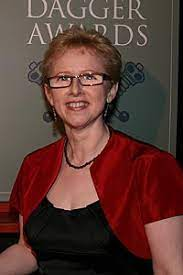
'Traditionally, authors will use pseudonyms as a disguise, to avoid reader and/or reviewer bias, or to differentiate various styles or sub-genres of their writing. Think Ruth Rendell/Barbara Vine, Agatha Christie/Mary Westmacott, and Evan Hunter/Ed McBain – both of which are pseudonyms chosen by Salvatore Albert Lombino after he was told by his editor that he would sell more books under an anglicised pen name. John Creasey, founder of the Crime Writers Association, was a prolific writer who used no fewer than twenty-eight pseudonyms (possibly to disguise the fact that he was publishing seven or more novels in a year!). His most famous series creations, adapted for TV and film, were probably The Toff and The Baron, penned under his own name, while Gideon of Scotland Yard was written as JJ Marric.
There is an appetite for novelty in the industry, added to which, a midlist author with 2 - 3 books has baggage to overcome in the shape of their sales records. BookScan is a database which compiles information for publishers & booksellers on book sales, and if an author’s previous works haven’t been bestsellers, the big book chains will order fewer and fewer with each subsequent publication. The obvious way to avoid the downward spiral is to be a bestseller with your first book. Simple, yes? Well, no. The USA and UK publish around 500,000 books per year, but only a tiny fraction receive meaningful marketing and publicity budgets. In fact, the Authors’ Licensing and Collecting Society says the top 10% of earners account for around 70% of publisher spend. Sadly, for the other 90% of authors, BookScan numbers are neither nuanced nor contextualized; it’s a case of ‘Just the facts, ma’am’. Publishers are usually transparent about relaunching authors under a new name precisely because they’re only trying to fool the algorithms, not the reading public.
Gender bias
It’s been true since the Brontë sisters first published their works that there is a gender bias against women in publishing. There is plenty of both anecdotal and statistical evidence that the books readers will choose, or discard – and critics review, or ignore – are skewed in favour of male writers. A 2009 international survey by VIDA, the Association for Women in Literary Arts, found that male authors’ books were reviewed 66 percent more frequently than women’s in The New York Times Book Review and London Review of Books– and the bias was even more pronounced in The Times Literary Supplement. Things have improved since then, but a 2019 update demonstrated that the balance still falls far short of parity.
My personal experience
I first wrote Before He Kills Again over a decade ago, and the late, great Reginald Hill read it. He really liked the story and wrote some generous words of recommendation for my agent to use as she touted it around the publishing houses. It was universally praised and unanimously rejected by over a dozen publishers. When I emailed Reg to let him know, he said they were – in his words – ‘fools’ and he urged me not to give up on it.
In the decade that followed, A.D. Garrett and Ashley Dyer took up all my creative energy and writing focus. But in 2019, I rewrote the novel I’d set aside and steeled myself to submit it to Joffe Books, offering it alongside my backlist of ‘Murphy’ titles. You can imagine my relief and joy when they praised it and wanted to commission it! However, my publisher, Jasper Joffe, was perplexed by my use of pseudonyms – what was the point? I went through all the reasons outlined here, but he argued that good marketing should be sufficient to remedy the vagaries of booksellers’ ordering systems, and he wanted me to revert to my real name for the backlist as well as the new novel. He was right: Before He Kills Again became a bestseller in the UK and the USA in e-format, garnering over 1100 favourable reviews and ratings, and a nomination for the CWA Steel Dagger. Of course, algorithms also have their influence on Amazon, as anyone who has ever bought so much as a thumb tack via the tech company’s shop front will know. But perhaps the difference is that readers who buy their books from Amazon can add the nuance BookScan lacks, as they are free – even actively encouraged– to comment and rate the books they read.
So, dear reader, when you discover that an author has changed their name, please don’t judge them too harshly – the reasons behind such decisions are complex and may be beyond the author’s control. Oh, and if you like a book do rate it for, on Amazon at least, there is literal truth in the phrase, per ardua, ad astra!'
October 1, 2021
Forgotten Book - Nothing but the Truth
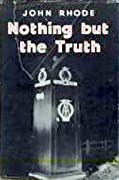
Thanks to a book collector's kindness, I've come into possession of a number of hard-to-find Golden Age or GA-influenced novels and I've started to work my way through them. I decided to give John Rhode's Nothing But the Truth a go. It first appeared in 1947 and although pretty obscure, it's been discussed on a few blogs, such as Noah's Archives. I agree with Noah's suggestion that the social history is really the most interesting part of the story. The dust jacket of the novel shows an AA sentry box of the kind once familiar on British roads, and in such a box...a body is found. A great idea for a crime scene and one of the most interesting features of the book.
The story begins with a solicitor entertaining an irascible client called Watlington, one of those rich and unpleasant people who so regularly fall victim to dastardly deeds in vintage crime fiction. As a result of a strange sequence of events involving a drunken chauffeur and a policeman called Fawkes, Watlington goes missing. When a corpse is subsequently discovered, many miles away, in the AA box, with its features unrecognisable, the seasoned mystery fan is likely to suspect one of those identity switches so common in Golden Age fiction. But suffice to say that Rhode follows an unorthodox path in this novel.
Unorthodox, and rather odd. There are the makings of a good story here, but the mystery is developed laboriously, with a good deal of repetition. Ultimately, Jimmy Waghorn of Scotland Yard comes on to the scene, and he resorts to consulting Dr Priestley, but the Great Detective makes only fleeting appearances, and acts as an armchair detective with his secretary Harold doing some legwork. One of the strange things about the story is that, despite Rhode's customary emphasis on accuracy in technical details, the account of the effects of the two drugs which feature in the plot is far from convincing.
A reader whose main interest lies in motive and characterisation will be disappointed by this one. I felt that Rhode could have played fair had he adopted a different story structure, but his chosen method for telling the story means that a key character remains hidden from view. I found this frustrating. I can cope with a bit of lazy writing in a crime novel, but I'm afraid there's far too much of it here. Overall, this is one of those detective stories that, despite those unorthodox elements, amply justifies the description 'humdrum'.
September 29, 2021
Vigil - BBC TV review
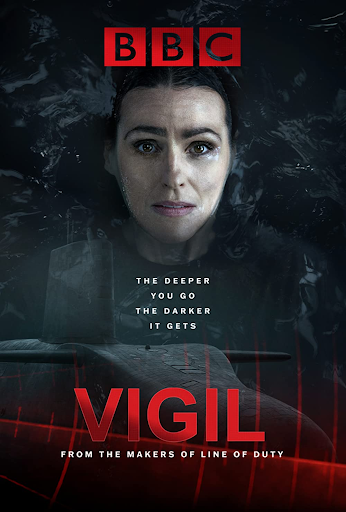
When I was a small boy, I sat through innumerable episodes of an American TV series called Voyage to the Bottom of the Sea, starring Richard Basehart and David Hedison. My Dad was a big fan of the show, which was set on board an American nuclear submarine, but I was rather less enamoured. Suffice to say it was very different from Vigil, a thriller series written by Tom Edge. It's set on board a British nuclear sub and has just come to the end of its six-episode run on BBC TV.
Any series about nuclear submarines is almost certain to involve espionage as an ingredient, but Vigil scores right from the start as it concerns an investigation of a murder on board HMS Vigil, which occurs shortly after the mysterious capsizing of a fishing trawler. DCI Amy Silva (the talented and ubiquitous Suranne Jones) is the top cop sent on board to figure out who killed bolshy crew member Burke (Martin Compston).
Amy suffers from claustrophobia, so sending her on to a submarine seems rather like an act of cruelty, despite her brilliance as a detective. But of course, in the finest tradition of Great Detectives, she goes for it. She has a complicated backstory, which emerges through a lengthy sequence of flashbacks. Her male partner drowned in a car accident for which she blames herself; she rescued his daughter from the car, but lost custody to the girl's grandparents. She then fell for a younger female cop, DS Kirsten Longacre (Rose Leslie), but that relationship has run into difficulties. While Amy gets embroiled in a complex series of goings-on on board Vigil, Kirsten investigates the murder of Burke's anti-nuclear activist girlfriend Jade on dry land.
The Vigil's crew includes some familiar faces, notably Shaun Evans, better known to me as the young Morse in the highly enjoyable Endeavour (I've seen two episodes of the new series eight so far, and they are definitely up to standard). Suranne Jones and Rose Leslie are terrific, and so is Stephen Dillane, who plays a crafty rear-admiral who knows more about what is happening in the depths of the sea than he's prepared to admit.
Vigil has proved very popular, but it's also received plenty of criticism, partly because of technical inaccuracies, partly because the final revelations were regarded by some as disappointing, and partly because of a perception of political bias. I enjoyed it with very few reservations (the main one being that the final fifteen minutes felt more like a conscientious soap opera than a thriller). Unlike all too many six-part series, it was packed with action and didn't outstay its welcome. Of course this means that some aspects were convoluted and over-the-top, but a story of this kind demands the suspension of disbelief and I was more than happy to suspend mine.
September 27, 2021
The Best Mystery Stories of the Year
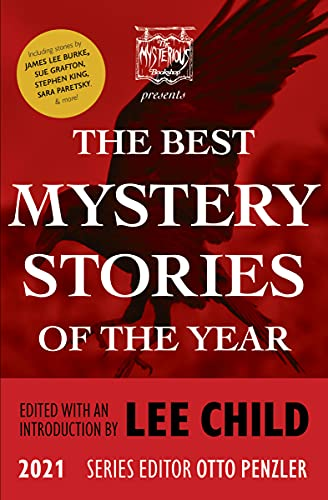
I'm truly delighted to be one of the twenty authors whose work is included in The Best Mystery Stories of the Year, edited by Lee Child, and this year's instalment of a series edited by Otto Penzler. The US version is published by Otto's Mysterious Press, the UK version (titled Best Crime Stories of the Year) by Head of Zeus.
You can no doubt imagine my glee when Otto told me that Lee had selected my story for the book, and when I found out that the other contributors included such luminaries as Stephen King, David Morrell, James Lee Burke, Sara Paretsky, Sue Grafton (a posthumous publication, alas) and Joyce Carol Oates. It's so gratifying to be in such company. And to have another story published by Mysterious Press in the US, just after , my new bibliomystery, appeared.
My author copies of the anthology have just arrived and I'm looking forward to diving into my fellow contributors' stories. Early reviews have been terrific. Publishers' Weekly gave the collection a starred review, saying: 'Superior...this volume is a must for mystery aficionados.' There was another starred review from Kirkus, which referred to 'Twenty Gems'. And for good measure Library Journal called the book 'a delicious mixture of style and sub-genre...there isn't a weak link in the bunch.'
My story is 'The Locked Cabin', which originally appeared in Maxim Jakubowski's book of 'impossible crime' stories and was inspired by my Atlantic crossings on the Queen Mary a couple of years back. It's a history-mystery set on the original Queen Mary and was great fun to write. The fact that it's achieved this recognition is an unexpected added pleasure.
